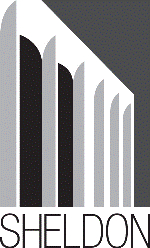Fine and Performing Arts, Hixson-Lied College of

Sheldon Museum of Art: Catalogs and Publications
Date of this Version
1977
Citation
This exhibition is part of the Statewide Touring Exhibition Project organized by the Sheldon Memorial Art Gallery, University of Nebraska-Lincoln and made possible by a grant from the Nebraska Arts Council and the National Endowment for the Arts in cooperation with the Nebraska Library Commission, the Nebraska Art Association and the local sponsors, (1976-77).
Abstract
The San Bias Islands, one for each day of the year, lie on the Caribbean side of Panama in a chain of tiny atolls. The Cuna Indians, who left the mainland long ago seeking peaceful isolation, live a quiet communal life in the thatched houses that crowd these Islands. The Cunas have always been self-sufficient, raising their food, building their houses and canoes and making their tools, medicines and clothing. Their economy has long been based on the sale of coconuts, but some men work in the Canal Zone and some sail as merchant seamen and this income enables them to buy cloth and manufactured items, although their wants remain simple.
The folk craft of making molas has existed for about one hundred twenty-five years, beginning when the Cunas moved from the mainland to the Islands where the cooler nights necessitated warmer clothing. The women sewed blouses with simple applique borders at first and gradually increased the size of these decorative strips until, with a panel in front and one in the back, only a yoke and short sleeves were needed to complete a kind of quilted garment. This blouse is worn with a dark colored, sarong-like wrapped skirt and bright red head scarf with painted yellow designs. Once every woman wore a gold nose ring and painted a black line down the center of her nose because a long nose was considered beautiful. This is a practice that seems to be dying out, but, when there was an effort to outlaw the wearing of molas, the women flatly refused. Although the women do not hold governing positions, the Cunas have a matriarchal society. A man may not sell property without his wife's permission and when a daughter marries, her husband is obligated to live with her family and contribute to its support.
The Cuna women have developed the fine needlework of molas into a distinctive art found nowhere else in the world. The technique has been called reverse applique and is created from three or more layers of cloth. The cloth is basted together and the design drawn on the top layer. Using small scissors, the woman cuts through the top layer and with tiny, even stitches she catches the narrowly turned edge to the cloth beneath. She then cuts through to the next layer and sews the raw edges under to leave a narrow line of that color showing. This process is continued until the bottom layer appears and the shapes are outlined by a series of colored lines. Any space between the main shapes is filled by an all-over pattern of short cuts often revealing strips of color as a result of small pieces of various colored cloth underlaid in these areas. Regularly appliqued shapes may be superimposed on the mola and bits of embroidery in colored threads may be added details.

